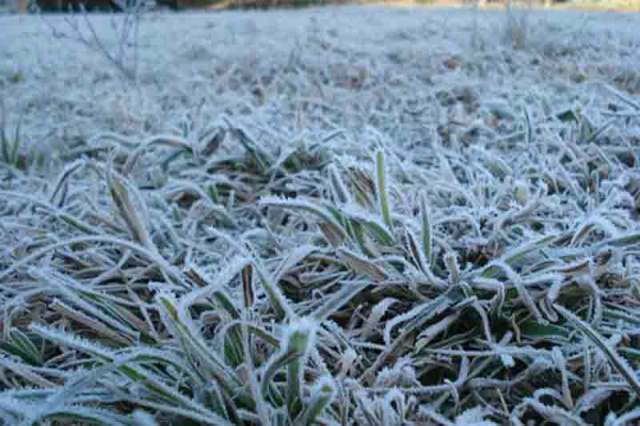RIO DE JANEIRO, BRAZIL – A polar air mass is gaining strength in Brazil and may cause heavy frost in agricultural areas this week, posing high risks for corn in Paraná, Brazil’s second largest corn producer, whose crop has suffered severe drought-related losses, according to experts.

Meteorologists say frost may even reach coffee areas in northern Paraná, which is not as relevant for this commodity today as it was in the past – the state’s crop is expected to represent less than 2% of national production.
In addition to Paraná, frost is forecast for areas further south in Mato Grosso do Sul and southern São Paulo, where some sugar cane crops are located, according to the Rural Clima report.
Paraná’s monitoring agency SIMEPAR pointed to heavy frost for Tuesday in a large central part of the state, starting in the west.
Moderate and mild frost is expected in virtually the entire state on Tuesday.
On Wednesday, the cold intensifies, and most of the north and west of Paraná should see heavy frost, while the rest of the state will experience the phenomenon with moderate intensity, according to SIMEPAR.
“The intense mass of cold and dry air is settling over the southern region of Brazil and intensifies the cold in all Paraná regions. With the exception of beaches, frost is forecast for all other areas of Paraná,” SIMEPAR said in a report on Monday.
For Wednesday, SIMEPAR is forecasting negative temperatures in the south, center, Campos Gerais, southwest, south of the metropolitan area of Curitiba and even in northern municipalities, where the cold is typically milder than in other areas.
“The very strong polar air mass causes severe frost in most of the producing areas of Rio Grande do Sul, Santa Catarina, Paraná, Paraguay and Mato Grosso do Sul and southern São Paulo,” said Rural Clima agrometeorologist Marco Antônio dos Santos.
Further south, such as Rio Grande do Sul, corn is virtually harvested, which minimizes the risk of significant losses.
Coffee grains
In the case of Paraná coffee, potential frost would have an impact next year, as this year’s harvest is underway.
Santos confirmed frost forecasts for Tuesday, noting that the polar mass will gain strength on Wednesday, confirming last week’s projections.
“Therefore, the situation is extremely complicated for second corn crop in western and southern Paraná, for Mato Grosso do Sul, Paraguay, and may reach some sugarcane and coffee areas in northern Paraná and southern São Paulo,” he said.
Paraná’s second corn crop is estimated at 9.8 million tons by the Department of Rural Economics (DERAL), which is projecting a drop of about 5 million tons compared to the initial potential, due to the impact of the drought.
The crop was planted late and thus became more exposed to the effects of the cold weather this year.
“The fact is: if strong and generalized frost occurs, there will be more losses in corn,” DERAL specialist Edmar Gervásio said.
He said that the state has a significant volume of area in the west and north susceptible to frost losses, “but it is not possible to say if there will be damages before the event.
Corn
The crop, planted late, ended up being more exposed to the effects of cold this year.
As wheat in Paraná is in its initial stage, most of it in vegetative development is not susceptible to losses from cold.
Risk until July
AgRural consulting analyst Adriano Gomes said that western Paraná and southern Mato Grosso do Sul have corn crops in stages in which “there may be higher production and quality losses” if there is frost until the first half of July.
He also said that in western Paraná there are few corn areas in maturation, when crops no longer feel the effects of the cold.
“The cold came with force here in the South,” he confirmed, adding that the consulting firm is conducting a survey to determine if frost has been registered in corn areas this Monday.
Santos, from Rural Clima, said that even areas further north of Brazil, traditionally warmer, will experience cold, although frost-free.
Temperatures will drop considerably in western Bahia and Mato Grosso.
In the Mogiana Paulista and Serra da Mantiqueira regions, cold will also be intense, but temperatures will not drop to the point of frost forming in these regions’ coffee areas.
“In São Paulo’s Mogiana and southern Minas Gerais (the country’s largest coffee producer) areas, I believe the risk is minimal. Frost is occurring in very high altitude regions, like Monte Verde, but those areas don’t have coffee.”

